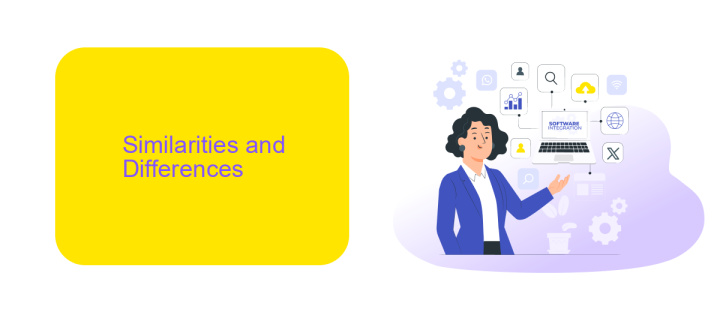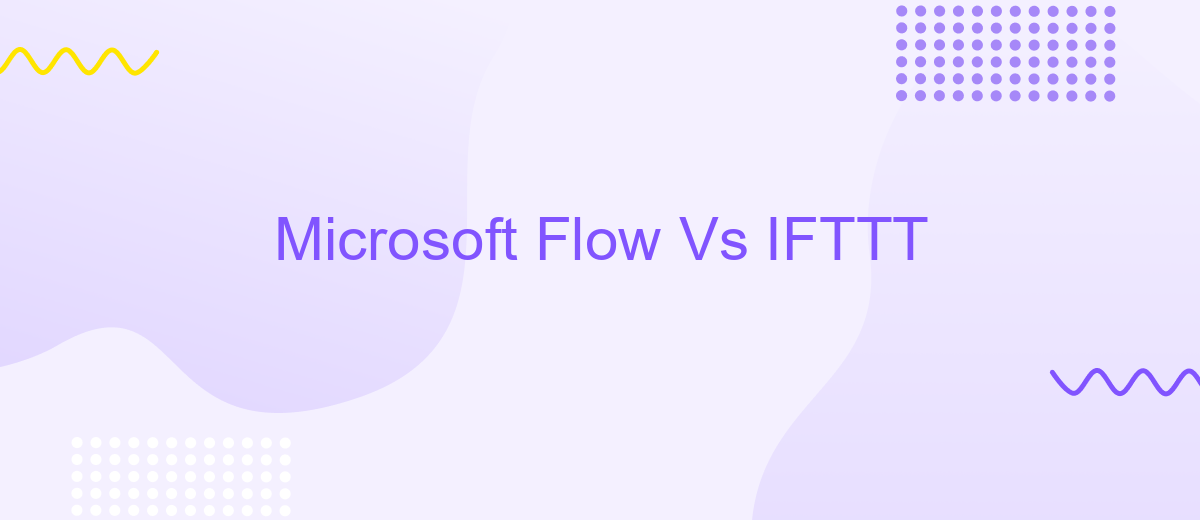Microsoft Flow Vs IFTTT
In today's fast-paced digital landscape, automation tools are essential for streamlining workflows and enhancing productivity. Microsoft Flow (now known as Power Automate) and IFTTT (If This Then That) are two popular platforms that help users automate tasks and integrate various applications. This article compares their features, ease of use, and suitability for different needs, helping you choose the right tool for your automation requirements.
Introduction
In today's fast-paced digital world, automation tools have become essential for streamlining workflows and increasing productivity. Two popular automation services, Microsoft Flow (now known as Power Automate) and IFTTT (If This Then That), offer unique features to help users automate tasks and integrate various applications. Understanding the differences between these two platforms can help businesses and individuals choose the right tool for their needs.
- Microsoft Flow (Power Automate): A robust automation tool designed for enterprise solutions, integrating seamlessly with Microsoft's suite of products and numerous third-party services.
- IFTTT: A user-friendly platform focused on connecting a wide range of consumer applications and devices through simple "if this, then that" recipes.
Both platforms have their strengths and limitations, making them suitable for different use cases. For those seeking a more advanced and customizable solution, Microsoft Flow may be the better choice. On the other hand, IFTTT is ideal for users looking for straightforward automation of everyday tasks. Additionally, services like ApiX-Drive offer valuable integrations, enabling users to connect various applications and automate workflows efficiently.
Similarities and Differences

Microsoft Flow and IFTTT are both powerful automation tools designed to streamline workflows and integrate various services. Both platforms allow users to create automated tasks, known as "flows" in Microsoft Flow and "applets" in IFTTT, which can connect different apps and services to perform specific actions. They share a user-friendly interface that requires no coding knowledge, making them accessible to a broad audience. Additionally, both services support a wide range of popular applications, enhancing their flexibility and usability.
However, there are key differences between the two. Microsoft Flow, now known as Power Automate, is more focused on business and enterprise solutions, offering advanced features such as data integration and complex workflow automation. In contrast, IFTTT is geared towards personal use and smart home integrations, providing a simpler, more consumer-friendly experience. For businesses looking for robust integration capabilities, tools like ApiX-Drive can complement these services by offering additional customization and integration options, ensuring seamless connectivity across various platforms.
Pricing and Plans

When comparing Microsoft Flow and IFTTT, it's essential to consider their pricing and plans to determine which platform best meets your needs. Microsoft Flow, now known as Power Automate, offers a range of plans to cater to different user requirements. The free tier provides limited functionality, while premium plans start at per user per month, offering advanced features and greater integration capabilities.
- Free Plan: Limited functionality and fewer integrations.
- Premium Plan: per user/month with advanced features.
- Enterprise Plan: Custom pricing for large organizations, offering extensive support and integrations.
IFTTT, on the other hand, operates on a simpler pricing model. It offers a free version with basic features and a Pro plan at .99 per month, which includes advanced applet creation and faster execution times. For those looking to integrate multiple services seamlessly, platforms like ApiX-Drive can be a valuable addition, providing a user-friendly interface and extensive integration options to enhance your automation workflows.
Use Cases and Integrations

Microsoft Flow and IFTTT are powerful automation tools that cater to different use cases and integrations. Microsoft Flow, now known as Power Automate, is designed for complex workflows and is deeply integrated with the Microsoft ecosystem, making it ideal for enterprise environments. It supports a wide range of business applications and services, allowing users to automate tasks within Office 365, Dynamics 365, and other Microsoft products.
On the other hand, IFTTT (If This Then That) is more user-friendly and focuses on simple, everyday tasks. It connects with various consumer services and smart home devices, making it perfect for personal use. Users can create applets that automate actions between different apps and gadgets, such as turning on lights when arriving home or posting updates to social media platforms.
- Microsoft Flow: Enterprise-level integrations, Office 365 automation, Dynamics 365 workflows
- IFTTT: Smart home device control, social media automation, personal task management
For those looking to streamline integrations further, ApiX-Drive offers a versatile platform that connects various services without coding. It can be a valuable addition to both Microsoft Flow and IFTTT, providing users with more flexibility and control over their automated workflows. Whether for business or personal use, these tools offer robust solutions to enhance productivity and efficiency.
Conclusion
In conclusion, both Microsoft Flow and IFTTT offer powerful automation capabilities, but they cater to different audiences and use cases. Microsoft Flow, with its robust integration with the Microsoft ecosystem and advanced workflow capabilities, is ideal for businesses and power users seeking comprehensive automation solutions. On the other hand, IFTTT's simplicity and wide range of consumer-focused applets make it a great choice for individuals looking to automate everyday tasks without a steep learning curve.
For those seeking to bridge the gap between various applications and services, tools like ApiX-Drive can further enhance the automation experience. ApiX-Drive provides a versatile platform for setting up integrations quickly and efficiently, allowing users to streamline workflows across multiple services. Whether you choose Microsoft Flow or IFTTT, leveraging additional integration tools can help you achieve a seamless and productive automation environment tailored to your specific needs.
FAQ
What is the main difference between Microsoft Flow and IFTTT?
Can Microsoft Flow and IFTTT integrate with the same services?
Which platform is easier to use for beginners?
Can I use both Microsoft Flow and IFTTT together?
Are there alternatives to Microsoft Flow and IFTTT for automation and integrations?
Time is the most valuable resource in today's business realities. By eliminating the routine from work processes, you will get more opportunities to implement the most daring plans and ideas. Choose – you can continue to waste time, money and nerves on inefficient solutions, or you can use ApiX-Drive, automating work processes and achieving results with minimal investment of money, effort and human resources.

